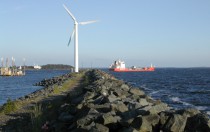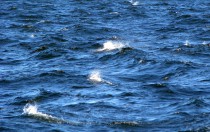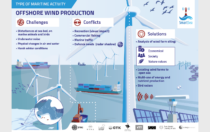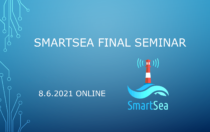Climate scenarios and analysis of extreme events

Simulations of the current state and future oceanographic conditions of the Gulf of Bothnia will be performed to ensure long-term perspective for planning of the sustainable development of the Gulf of Bothnia. We will us three-dimensional ocean-ice-biogeochemistry model NEMO-LIM3-SCOBI and wave model WAM to provide simulations of e.g. sea level, currents, temperature, salinty, ice, waves, nutrients and chlorophyll-a. Both model setups will have about 1 nmi horizontal resolution in the Gulf of Bothnia.
We will use the climate scenarios to study, how climate change affects the frequency and severity of extreme events in the marine environment. The probabilities of certain extreme events, such as mild/severe ice winters, sea levels, salinity, sea surface temperature, anoxia and algal blooms will bee estimated.
The climate scenarios will be made available in the Marine Spatial Planning toolbox. We will study how the changes in hydrographic and sea ice conditions affect the optimal location andgrowth efficiency of fish farming. The scenarios of sea-ice conditions and waves will also be used e.g. for long term planning of the ice breaking needs and maintenance of fairways. Also new guidelines for the ice load design requirements offshore constructions such as wind mill parks will be provided. And suitability of seafloor areas for construction (wind mills and aquaculture) will be studied in future climate.
Articles

Pohjanlahti merituulienergian tuotantoalueena
Konteksti Merituulienergian laajamittainen rakentaminen on keskeinen askel Suomen tavoitetta hiilivapaaksi yhteiskunnaksi. Suomen merialueista erityisesti Pohjanlahti tarjoaa hyvät olosuhteet energian tuotannolle,

Scientific Articles published in SmartSea
One of the products of the SmartSea are the various scientific articles published by our partners during the project. The

SmartSea Infographics
Offshore wind production, Aquaculture, Fisheries, Blue Well being, recreation and tourism have been key areas of the SmartSea project. We

SmartSea Final Seminar/Loppuseminaari 8.6.2021
SmartSea will hold a Final Seminar on the results of the project, and a discussion with stakeholders and affiliates on
